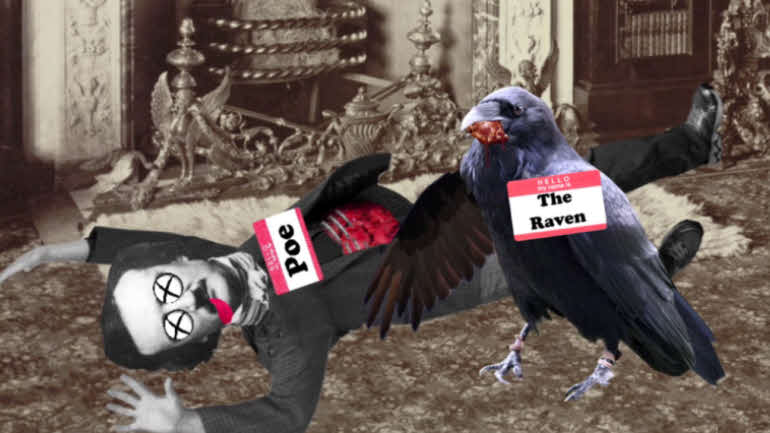ShmoopTube
Where Monty Python meets your 10th grade teacher.
Search Thousands of Shmoop Videos
Accounting: Margin, Operating Profits, and More 0 Views
Share It!
Transcript
- 00:00
Accounting Allah shmoop margin operating profits and oh so much
- 00:06
more All right yet more case examples and we know
- 00:10
we know But fewer than twenty people died last year
- 00:13
from reading case examples or watching them So here we
- 00:16
go Gary and Carrie have started a salad dressing company
Full Transcript
- 00:20
a venture capitalist Jerry who claims it's the only salad
- 00:23
dressing ever to make beets tastes edible has helped them
- 00:27
with the funding they need to get their little business
- 00:29
off the ground The first year goes gangbusters for not
- 00:32
dressing around The company was able to Lisa Bottling facility
- 00:35
which they came to call their own Will The various
- 00:38
supplies red wine vinegar Dijon mustard Shall It's kosher salt
- 00:41
Yet they're all kept under tight lock and key at
- 00:44
year end Fifty store chains are now carrying the dressing
- 00:47
Getting into fifty store chains was no easy feat Gary
- 00:50
and Carry only got there because Jerry had those relationships
- 00:54
and was respected enough by the chain owners to take
- 00:57
a risk on their new product While that risk paid
- 00:59
off handsomely the store's benefited in other ways too That's
- 01:03
enough directly financial because of the newness or the unknown
- 01:07
nous of the dressing Yeah suddenly became cool to have
- 01:10
his dressing in your store Very different negotiating powers for
- 01:14
not dressing around versus a one off craft or Newman's
- 01:18
or Hidden Valley or other well known legendary brands that
- 01:22
are quote must haves unquote in every grocery store Because
- 01:25
the dressing was not well known and already essentially presold
- 01:29
while the grocery store stocking the product we're able to
- 01:32
take a relatively very large cut or percentage of the
- 01:36
sales of each bottle Will a bottle of the dressing
- 01:39
cells to Joe six pack for eight bucks The store
- 01:41
keeps four bucks I mean the stuff inside the bottle
- 01:44
costs not dressing around like two bucks leaving two dollars
- 01:48
for overhead And everything else that is overhead comprises things
- 01:52
like the salaries of Gary and carry marketing shipping delivery
- 01:56
legal costs insurance and so on to not dressing around
- 02:00
while they only care about four box that they get
- 02:02
per bottle from the stores that their revenues If the
- 02:05
store wants to sell the dressing for eight bucks or
- 02:07
twelve or twenty Gary and carry on Lee keep four
- 02:11
That's it No matter what those four bucks are their
- 02:14
revenues per unit and the fact that each unit cost
- 02:17
two dollars implies that not dressing around keeps two dollars
- 02:21
a unit in profit or gross profit or has fifty
- 02:25
percent gross margins And Gross isn't a pejorative word here
- 02:29
about spilled bottle Rather it's one of the delineations of
- 02:33
profits right You also have offer rating profits which our
- 02:37
profits after all the salaries of the employees are paid
- 02:40
and lawyer fees and rent and insurance and other infrastructure
- 02:43
costs Operating profits are basically all the profits except taxes
- 02:48
and dividends and they're operating the cost it takes to
- 02:51
operate the company And then there are net profits which
- 02:55
are the famous bottom line Net profits are profits after
- 02:59
everything else that is after the cost of goods and
- 03:02
the cost of overhead in the cost of taxes and
- 03:05
the cost of dividends and so on Check out the
- 03:07
performance of not dressing around after the first year Here
- 03:10
is the income statement for Year one Well that's one
- 03:13
point two five million dollars in revenues Yeah not bad
- 03:16
for a first year startup Note that when Jerry funded
- 03:19
the company with his half million bucks the company had
- 03:22
almost no revenues Jerry valued the company at one point
- 03:26
five million dollars which was at the time well almost
- 03:29
infinite times revenues Now after your one well it's just
- 03:33
one times revenues Yeah maybe not a huge multiple if
- 03:35
it's growing really fast and revenue multiples in a vacuum
- 03:38
mean almost nothing really Low margin companies trade at low
- 03:42
multiples of revenue However At first blush it looks like
- 03:45
not dressing around should be a pretty high margin company
- 03:48
Over time their gross margins should trend above fifty percent
- 03:52
because they get bigger they get volume deals and you
- 03:54
know with scale overhead as a percentage of revenues should
- 03:58
come down a lot anyway At the moment Jerry is
- 04:00
guessing that there are thirty percent operating margin business that's
- 04:04
sail like when they have one hundred million dollars in
- 04:08
sales and a twenty percent net margin Business that is
- 04:11
on one hundred million dollars of sales Not dressing around
- 04:14
should have twenty million dollars of after tax profits Right
- 04:18
So Jerry notes that the average S and P five
- 04:20
hundred large public company trades it around have fifteen times
- 04:23
earnings and that not dressing around is growing much faster
- 04:26
than almost all of those companies So in theory it
- 04:29
should trade at a higher multiple But even at fifteen
- 04:32
times there twenty million dollars of profits well he thinks
- 04:35
the company could be worth well over three hundred million
- 04:38
bucks And that would be a huge windfall return on
- 04:41
his original five hundred thousand dollar investment if they execute
- 04:45
Okay So let's note some other important elements in the
- 04:48
first year's income statement here Well they made a bit
- 04:50
less than four bucks a unit Some of the larger
- 04:53
stores were able to negotiate to keep five dollars on
- 04:56
the eight dollars selling price And this was a reasonable
- 04:58
deal for not dressing around to Dio being in a
- 05:01
phew Wal Mart stores helped with awareness and they were
- 05:04
happy Teo you know just be there Their expenses were
- 05:07
a bit mohr than they had originally thought A common
- 05:10
problem with startups so they're gross Margin was forty two
- 05:13
percent instead of fifty percent that they had been modelling
- 05:16
or guessing anyway Overtime with size and scale and more
- 05:19
negotiating leverage against the you know mustard makers and kosher
- 05:23
salt people And you know all the distributors And so
- 05:26
on Then they presume they'll be able to garner more
- 05:29
favorable pricing So yes they're losing money right there Just
- 05:33
a little In one year they lost fifty five grand
- 05:35
or four cents a share assuming that the company gets
- 05:38
sold for more than one point five million dollars and
- 05:40
all the shares convert to being one class So yeah
- 05:44
a very good start for Gary Carrie and Jerry and
- 05:47
their world beating salad dressing You know they appear to
- 05:49
be headed for fabulous financial success but well we wouldn't 00:05:53.736 --> [endTime] bet the you know ranch on it
Up Next
What do you get when the guy who wrote “The Raven” makes a serious effort to write in verse? Poe-try… Now, when you’ve detached your eyes f...
Related Videos
Incidents in the Life of a Slave Girl, abridged. Ready? Go.
Emily Dickinson: Along with Van Gogh, proof that you’re never really famous until you’re dead.
So the revolution was pushed along by… pamphlets? Sure, what the heck, let’s go with it.
We’ll take one order of liberty, but hold the death.




